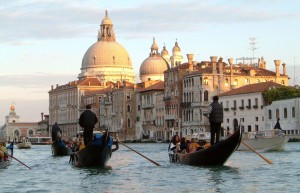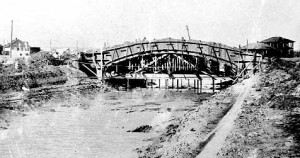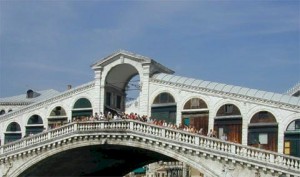How Venice Was Built
How was the much-loved Italian city constructed on top of marshland?
Despite Venice being frequently voted the world’s most beautiful city, on paper it appears to be a logistical and constructional nightmare. It is built, largely, on marshland – a lagoon which is just 8 per cent land, and one that contains some of the largest and heaviest religious and administrative buildings in Italy. And that’s not even accounting for the dwellings of an estimated 60,000 residents and the risk (a very real risk as shown by history) of cataclysmic flooding. This, of course, raises the question: how does Venice keep above the water?
Key to its construction is an ancient method of using raised foundations, which effectively elevate ground zero to a height where buildings can be safeguarded from tidal waters. This involves the hammering of thousands of pilings – large wooden stakes commonly made from alder – through the water and into the underlying sand and clay.
Each piling is positioned very closely to its neighbouring stake, one after the other, ultimately forming a raised wooden platform. Once a certain number of pilings has been driven into the earth, the tops are evened off and a substrate (or foundation layer) of wood and marble laid over the top. It is upon this which Venice’s buildings are constructed.
 Of course, raising buildings out of the water is but one half of building in Venice – the other being to successfully channel the lagoon’s waters into commutable highways. Venice’s canals, which run for a total of 42 kilometres (26 miles), are built and maintained in a multi-stage – and never-ending -process that begins with the construction of a cofferdam.
Of course, raising buildings out of the water is but one half of building in Venice – the other being to successfully channel the lagoon’s waters into commutable highways. Venice’s canals, which run for a total of 42 kilometres (26 miles), are built and maintained in a multi-stage – and never-ending -process that begins with the construction of a cofferdam.
A cofferdam is a temporary barricade that, once erected, allows a portion of the lagoon’s waters to be blocked and redirected, which is necessary for any building work to take place. Once the damming structure is in place, the draining of the area can start, with industrial pumps removing any remaining water held in the channel. Next, large-scale dredging takes place, with huge diggers and cranes excavating the channel.
 Once the channel is clear, engineers can begin fortification of the canal, utilizing pilings, bricks, clay and – more frequently in recent years – cement to line and strengthen its core structure. Wooden pilings are still used today because, when submerged, the almost zero-oxygen environment of the canal preserves them incredibly well, as well as bolstering their strength further through petrification – an effect caused by the flow of mineral-rich waters in their immediate vicinity.
Once the channel is clear, engineers can begin fortification of the canal, utilizing pilings, bricks, clay and – more frequently in recent years – cement to line and strengthen its core structure. Wooden pilings are still used today because, when submerged, the almost zero-oxygen environment of the canal preserves them incredibly well, as well as bolstering their strength further through petrification – an effect caused by the flow of mineral-rich waters in their immediate vicinity.
Finally, and most topically, Venice’s construction is protected by a series of flood-prevention mechanisms. These range from the installation of conventional concrete dams around the city, through to a project initiated in 2003 (MOSE) to set up huge inflatable pontoons at the mouth of the lagoon when high waters threaten.
Facts about Venice
 Islands – Venice spans across 117 small islands in the marshy Venetian Lagoon of the Adriatic Sea. The lagoon itself stretches between the mouths of the Po and Piave rivers.
Islands – Venice spans across 117 small islands in the marshy Venetian Lagoon of the Adriatic Sea. The lagoon itself stretches between the mouths of the Po and Piave rivers.
Plague – Between the mid-14th and early-17th centuries, Venice was hit by the plague no less than three times, with the ‘black death’ claiming more than 200,000 lives.
Sinking feeling – In the 20th century Venice began to sink, caused largely by the digging of many artesian wells in the vicinity. As a result, artesian wells were banned in the Sixties.
MOSE – In 2003 the Italian government initiated the MOSE project, which involves the creation of 79 inflatable pontoons across the entrance to the lagoon to reduce the risk of flooding.
Tourist hotspot – Venice is one of the most visited cities in the world, with a recent estimate stating over 50,000 tourists arrive daily. This number increases further during the famous carnival.
